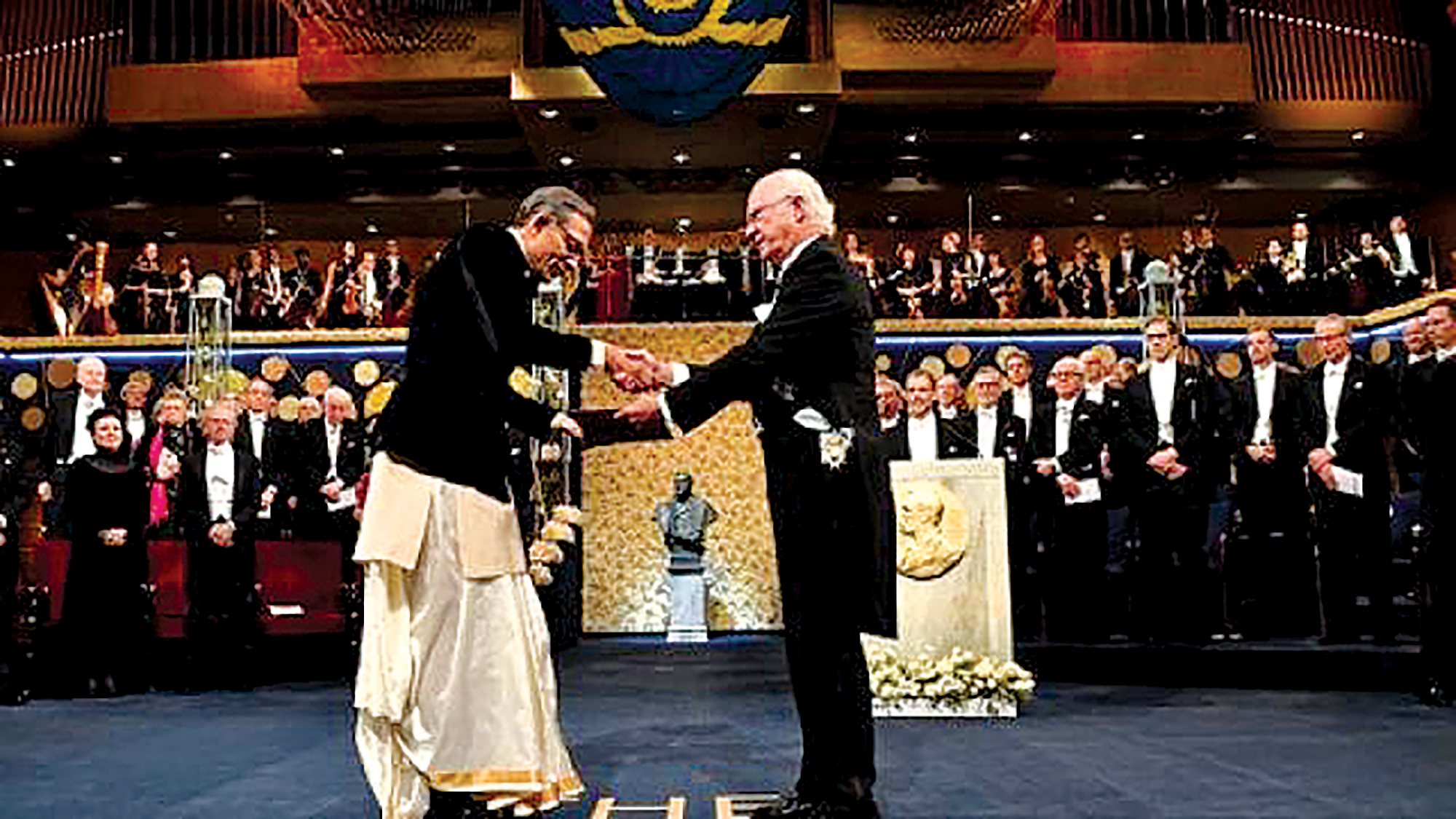When Abhijit Banerjee wore a dhoti to receive a Nobel Prize in Economics, it was a cultural assertion of his motherland, where ethnic diversity is celebrated
Abhijit Banerjee along with his wife French-American Esther Duflo received Nobel Prize in Economics for their ‘experimental approach to alleviating global poverty’ adorning a dhoti and kurta with a black Jodhpuri jacket. His wardrobe was described by the Western media as ‘dapper’.
There are innumerable ways of wrapping the dhoti (unstitched cloth) around the waist, and Banerjee did it the Bengali way. Made of cotton, dhoti is more comfortable than trousers in the hot tropical climate but might he must have felt cold in Sweden. The couple received the prize from King Carl XVI Gustaf of Sweden during a ceremony held at the Concert Hall in Stockholm, where the outside temperature was at freezing level.
Apart from asserting his Indian identity, his attire was perhaps meant to remind the audience of his seminal work on poverty alleviation, for which he was being awarded the Nobel. Apart from its exotic appeal, the dhoti is a poor villager’s attire in the vast hinterlands of India.
Gandhi’s Swadeshi movement was all about handspun khadi to boycott boycott foreign cloth and to get khadi manufactured. “I do wish that they (people at large) may understand that swadeshi means everything,” Gandhi had said. In his weekly publication, Navjivan Gandhi described an incident when he was travelling from Madras (now Chennai) to Madurai by train. In the crowded compartment in which he was seated, “Almost without exception, they were bedecked in foreign fineries,” he observed.
He pleaded with his co-passengers to wear khadi. They told him, “We are too poor to buy khadi, it is so dear.” Gandhi writes, “What effective answer could I give them, if it was not to divest myself of every inch of clothing I decently could and thus to a still greater extent bring myself in line with ill-clad masses?” Khadi to him was the symbol of Indian humanity, freedom and equality. And Jawaharlal Nehru described it as “the livery of India’s freedom.” The significance of the dhoti is immense and Banerjee is to be praised for his choice of dress.
In the more contemporary setting of India today, dhoti is the attire of the older generation. But it has not lost its charm. It is still worn by millions of Indians, particularly in rural areas, in varied ways in different parts of the country. The way it’s folded, a knot is tied, pleats are made, tucked and parted between legs changes every 500 kilometres—there are at least 100 known variants of tying a dhoti. It could be from four to six feet long, and has many names: mardaani, veshti, chaader, mundu, dhotra, suriya, to mention a few.
The way a dhoti is tied is quintessential to every region, like every city has its own typical beer brewery in Germany. LK Advani wears a dhoti typical of the Sindhi community while Atal Behari Vajpayee wore dhoti inspired by the style in Varanasi. In Bengal dhoti, is tied similar to Varanasi but with a variation — one end is loose and is to be held in the hand. Long back, when Advani was still a journalist and started wearing dhoti-kurta, somebody questioned him about his choice of clothing. He was fairly matter-of-fact in his response. “I have never believed that western attire is a sign of modernity. I have always felt more comfortable, in body and mind, wearing a dhoti-kurta. At the same time, I was never dogmatic about these matters,” he writes in his autobiography.
Mundu is another variant of dhoti worn in south India, which is basically a wraparound. It can further be folded above the knees for easy manoeuverability. Mundu is far more popular in southern India than dhoti in the Gangetic plains.
Though dhotis are convenient and suitable for hotter climes, tying them could be cumbersome in this fast pace of life – a reason why its female counterpart, the sari, tends to lose out in the popularity charts. So now pre-stitched versions are available to be worn during festivals, weddings and parties for ethnic appeal. Moreover, dhoti-pants are getting popular with women – it is acquiring an androgynous character. Wearing a dhoti to the Nobel makes ethnicity chic.





